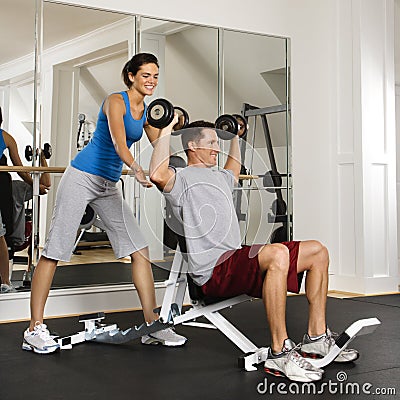The phrase “Don’t lock your joints” refers to your elbows and your knees. Locking a joint means straightening it so completely that it moves past the point where it normally sits at rest. For example, you don’t usually stand with your quadriceps (front thigh muscles) as tight as can be with your kneecaps pulled up; that’s a locked knee. Locking your knees isn’t only bad news for your knee joints, but it also causes lower back pain. It can even lead to more serious injuries. One of our friends actually knew someone who passed out when he was singing at a choir concert because he locked his knees — he fell right off the back of the riser. And locking the knees is a way of cheating when you perform exercises in a standing position, such as the lateral raise and the barbell biceps curl.
Locking your elbows places excessive pressure on your elbow joints, tendons, Constant elbow locking causes tennis elbow (an inflammation of the elbow tendons), even if you’ve never held a tennis racket in your hand. Locking your elbows also contributes to bursitis through the rupturing of the bursa (little lubrication capsules) located in your joints. Bursitis
results in swelling, pain, and tenderness at the elbow. Snapping your elbows also is a form of cheating because the weight is temporarily shifted off your muscle and on to the bone. When you snap your elbows, your muscles fail to get the proper workout.
Locking your elbows places excessive pressure on your elbow joints, tendons, Constant elbow locking causes tennis elbow (an inflammation of the elbow tendons), even if you’ve never held a tennis racket in your hand. Locking your elbows also contributes to bursitis through the rupturing of the bursa (little lubrication capsules) located in your joints. Bursitis
results in swelling, pain, and tenderness at the elbow. Snapping your elbows also is a form of cheating because the weight is temporarily shifted off your muscle and on to the bone. When you snap your elbows, your muscles fail to get the proper workout.



 Most weight-training mistakes made don’t affect anyone but you. However, if you mess up while spotting someone else, you may be putting your friend (or soon-to-be ex-friend) at risk for injury. Or, at the very least, you may be depriving your buddy of an enjoyable and effective workout. When acting as a spotter, you need to walk that fine line between not helping enough and getting too involved.
Most weight-training mistakes made don’t affect anyone but you. However, if you mess up while spotting someone else, you may be putting your friend (or soon-to-be ex-friend) at risk for injury. Or, at the very least, you may be depriving your buddy of an enjoyable and effective workout. When acting as a spotter, you need to walk that fine line between not helping enough and getting too involved.